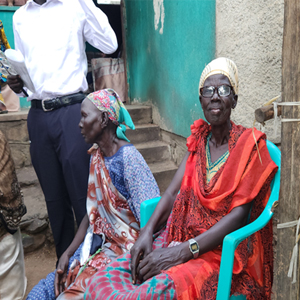Blindness That Should Never Happen": How Malnutrition and Ignorance Are Fueling Vision Loss in Africa

In the quiet corners of rural Africa, a child sits at the back of a dusty classroom, staring at a chalkboard she cannot read. Her teacher thinks she’s slow. Her classmates think she’s shy. The truth? She can’t see.
All across underdeveloped regions, vision is silently slipping away — not from age or rare diseases, but from something far more tragic: malnutrition and a lack of awareness. This is a crisis that isn’t just heartbreaking — it’s preventable.
At First Sight, we believe that no one should live in darkness because of where they were born. And we’ve seen how simple, life-changing solutions — like a pair of glasses — can bring clarity back to a blurred world.
Malnutrition: The Invisible Enemy of Eyesight
In many low-income communities, especially in Africa, diets are built around survival — not nutrition. Staple foods like maize and cassava fill empty stomachs but lack the essential nutrients eyes need to stay healthy.
Vitamin A deficiency is one of the leading causes of childhood blindness.
Zinc and iron deficiencies weaken the optic nerve and impair night vision.
Omega-3 fatty acids, crucial for retina development, are often absent.
According to the World Health Organization, over 250 million children globally are Vitamin A deficient — and hundreds of thousands go blind every year because of it.
And yet, few talk about it. Even fewer do something about it.
Ignorance Keeps the Crisis Alive
Many children and families suffering from poor vision don’t even know what’s happening to them. In the absence of basic healthcare and health education, blurred vision is normalized — accepted as just another hardship of life.
Here’s what we’ve heard in the field:
- “I thought my son wasn’t smart enough for school.”
- “My grandmother said blurry eyes are part of getting older.”
- “We don’t know anyone who wears glasses here.”
Cultural stigma, misinformation, and lack of access to care mean that even those who could be helped with something as simple as a pair of glasses… aren’t.
Amina’s Story: Unseen Until First Sight
In a village untouched by clinics or charities, we met Amina — a bright, quiet girl who had never answered a question in class. She wasn’t failing because she lacked intelligence. She was failing because she couldn’t see.
She didn’t speak English. She was too shy to stand for photos. She wouldn’t have made it into a brochure or a video.
But to First Sight, she mattered.
We tested her vision on the spot. Fitted her with glasses. Watched her eyes light up as the world came into focus — perhaps for the first time in her life. Her teacher cried. So did we.
How First Sight Brings Real Solutions
At First Sight, we don’t wait for fancy clinics, specialists, or funding rounds. We act.
No electricity required
No medical training needed
No delay — glasses are delivered in minutes
Our portable kits allow us to:
Test vision on the spot
Fit prescription glasses instantly
Work in the most remote villages with no access to care
We also educate communities about nutrition and eye health — breaking the cycle of blindness that has persisted for generations.
Be Part of the Change
This is a crisis. But it’s one we can solve — with knowledge, compassion, and action.
By supporting First Sight, you’re helping:
Children stay in school
Parents return to work
Communities reclaim their independence
Futures become visible again
Because when people can see, they can learn, build, dream, and thrive.
Would you like this blog formatted for newsletters, press releases, or a downloadable PDF? I’d be happy to help!

